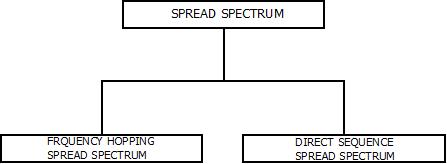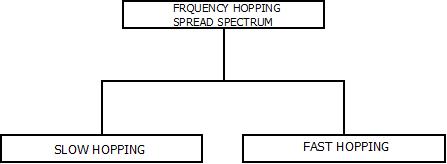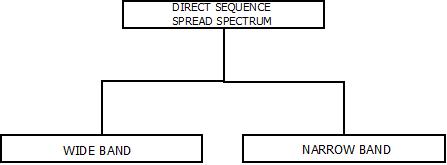Spread Spectrum : Introduction
- When transmitted signals of certain frequencies are varied slightly in order to obtain greater bandwidth as compared to initial bandwidth is known as Spread Spectrum.
- Spread Spectrum technology helps in transmission of radio signals because they can easily reduce the noise and other issues that are data resistant.
- It can be broadly categorized into two:

Spread Spectrum
- The major reason of spectrum technology being used is because of its proper bandwidth utilization ability.
Spread Spectrum : Frequency Hopping Spread Spectrum (FHSS)
- The logic behind the use of Frequency hopping Spread spectrum is, in order to utilize bandwidth properly, we need to divide the whole available bandwidth into many channels and spread them between channels which are arranged in a continuous manner.
- The selection of frequency slots is done on random basis and based on their occupancy, frequency signals are transmitted.
- The transmitters and receivers keeps on hopping on channels available for a particular amount of time in milliseconds.
- Hence, frequency division multiplexing and time division multiplexing are implemented simultaneously in FHSS.
- FHSS can be classified as :

Frequency Hopping Spectrum
- Slow hopping : In slow hopping, multiple bits are transmitted on a particular or same frequency.
- Fast Hopping : In fast hopping, individual bits are split and are transmitted on different frequencies.
Advantages of FHSS
- Secure.
- Simple implementation as compared to DsSS.
- High efficiency.
Disadvantages of FHSS
- Less Robust.
Spread Spectrum : Direct Sequence Spread Spectrum(DSSS)
- Direct Sequence Spread Spectrum is another type of spread spectrum in which data that needs to be transmitted is split into smaller blocks.
- Then, each data block is attached with a high data rate bit sequence and is transmitted from sender end to receiver end.
- At the receiver’s end with the help of data rate bit sequence, data blocks are recombined again to generate the original data which was sent by the sender.
- If in case the data is lost, with the help of those data rate bits data blocks can be recovered.
- This split of data into smaller blocks is done to reduce noise and unintentional inference.

Direct Sequence Spectrum
Advantages of DSSS
- Signals are difficult to detect.
- Less chances of jamming.
- Less reluctant to noise.
Disadvantages of DSSS
- Slow in process.
- Requirement of wide-band channels.
Spread Spectrum : Applications
- LAN technology.
- Satellite communication technology.